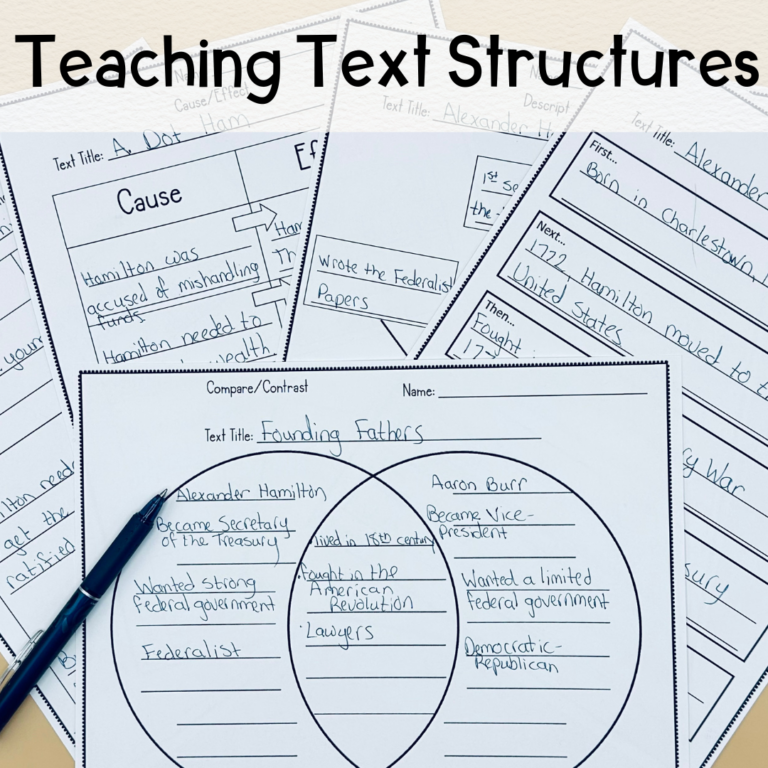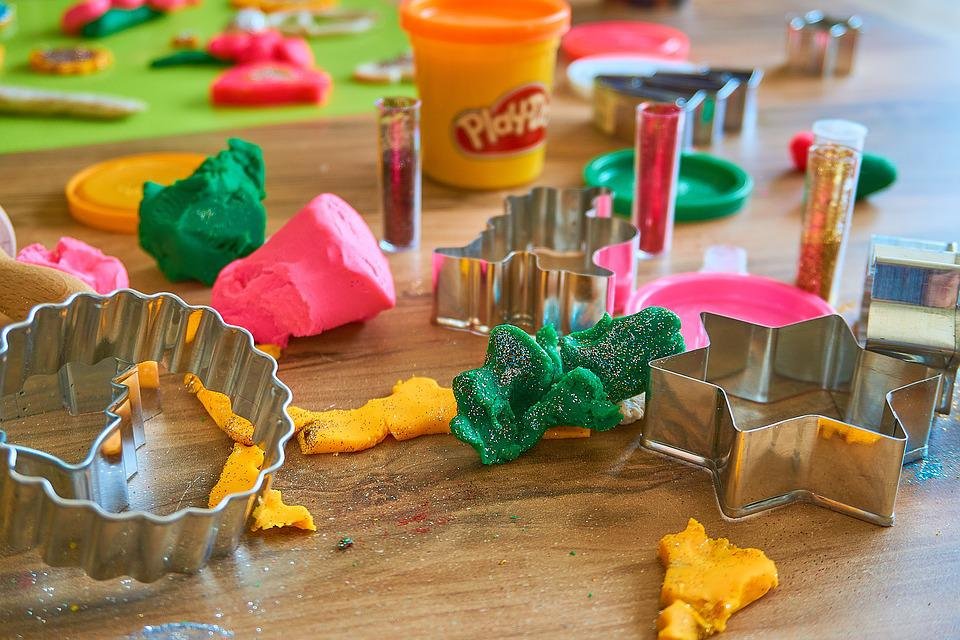
Share This:
If you have a child that is about to enter kindergarten, you might find yourself wondering what they need to know when they come to us. Do they need to know all their letter sounds? Should they be reading? Today, I want to put your mind at ease about what we expect when your child starts kindergarten.
To put it simply, your child does NOT need to be reading when they enter school. We do NOT expect them to know all their letter sounds. We will spend much of our year learning how letters and sounds work. But that doesn’t mean we couldn’t use your help. There are some simple things you can do at home to help prepare your child for school. Even if you spend 5 minutes a day on the activities below, your child will receive a huge boost in their kindergarten readiness.
Please note, math is not my strong suit, so I am not offering any tips for math kindergarten readiness!
Before starting, I need to give a huge shoutout to my friend Jackie (kindergarten teacher) and the Occupational Therapist at my school. Both of them gave advice and feedback for this post.
We want children to be able to write their first names as soon as possible in kindergarten. If they could master this before they enter kindergarten, it would be extremely beneficial. I’ve noticed that a lot of students come to school knowing how to write their name, but only in uppercase. When teaching children to write their name, make sure they only write the first letter uppercase, while the remaining letters are lowercase. Encourage proper letter formation. If you are uncertain how to properly form letters, you can find a quick video here. (Don’t worry if you aren’t sure about proper formation—I literally had to teach myself cursive this year!)
Did you know it can take hundreds of exposures to a letter before children recognize it automatically? HUNDREDS. The sooner we can give that exposure, the better chance our children have of becoming automatic with letter sounds at an appropriate age.
My daughter is almost 3, and we have been working on letter NAMES with her for several months. I know that some people suggest skipping letter names altogether to focus on letter sounds, but I disagree. Children MUST know both. As soon as you think your child is ready, grab a set of ABC flashcards (uppercase is easier for our youngest friends.) Teach them both the name and the sound that letter makes. If you aren’t sure of the proper articulation, feel free to check out a video I created for PhonicBooks.
If you are working with a very young child, I feel that letter names alone is appropriate. If your child is in their summer before kindergarten, please work on both letter names and sounds. You could say something like “This is the letter t. Its name is t, its sound is /t/.” There are many alphabet decks that have images on them with a keyword. Use those to help anchor the letter. For example, the card might have the letter R with a rat. You could teach them to say “R rat /r/” (/r/ = sound).
(This section could not have been written without the help of the Occupational Therapist at my school. I’m so grateful for her tips and advice.)

Fine motor skills are when we use the small muscles in our hands to do tasks such as cutting, tying our shoes, putting on our clothes, and even playing with playdoh or blocks. Our children must work to develop these fine motor skills. Here are just three ideas you can use to help promote fine motor skills development this summer.
1. Encourage your child to put on their own clothes and manage their belongings. Sounds simple, right? But think about everything that can be involved, including snaps, zippers, and buttons. Whatever clothing your child will be expected to wear, work on making sure that they are able to go to the restroom without needing assistance. Can your child unzip their bookbag without assistance? Do they know how to put it on and take it off? (Tying shoes is especially problematic, so we don’t expect that right away in kindergarten!).
2. Help your child to open the items in their lunchbox (even if they don’t pack, this can still be helpful!). Children often struggle to take the lids off containers, open up snack bags and their milk. You can practice these skills at home! Show children how to open up their yogurt, their pudding, and all those delicious treats they bring. You are developing both independence and fine motor skills!
3. PLAY! Play with blocks, playdoh, kinetic sand, drawing, coloring, painting, etc. Anything you can do to provide some resistance to their hand will help develop hand strength. Rolling playdoh into balls builds fine motor skills! Learning to hold your crayon to color in your favorite coloring book builds fine motor skills! Encourage your child to play this summer and build those muscles in their hand. Learning and growing don’t have to be boring, and you can build fine motor skills through play you already do.
Phonemic awareness is the ability to manipulate individual sounds. Can your child tell you the first SOUND in cat? Can they take the word cat and break it into its individual sounds (c-a-t)? If you say the sounds c-a-t, are they able to tell you that the word is cat? Each of these activities asks children to manipulate individual sounds.
Strong phonemic awareness is essential when learning to read. So what does that look like at home?
The easiest skill to work on is beginning sounds. A few activities you could do to build initial sound awareness, and then more generalized phonemic awareness:
1. Say two sounds, like /m/ and /t/. Ask your child “Do they sound same?” Do this several times with sounds, where sometimes the sounds are the same and sometimes they aren’t. This is a great strategy to use for children who may struggle with the next task on this list. (This tip came from my kindergarten friend Jackie!) If they don’t get it at first, it’s okay to model both the sounds and the answer! You could say, “Hmmm. m and m DO sound the same. B and t DO NOT sound the same” until they start to pick up the skill!
2. Give your child two words, like mom and milk. Ask, “Do they sound the same at the beginning?” If they struggle with this, emphasize the initial sounds, saying “mmmmmmmmmom and mmmmmmmilk both start with the /m/ sound” It may be difficult at first, and that is okay!
3. Once children can easily tell you beginning sounds, start working on segmenting (taking words apart) and blending (putting words back together.) Say a simple 3 sound word like “pig” and ask them to tell you the sounds. Likewise, you could say the sounds in a word, like r-a-sh, and see if they can put those sounds together and tell you the word. If using 3 sounds is too difficult a task, take it back to 2 sounds.
In the almost 1,200 words of this blog, I’ve yet to mention reading and spelling words. This is intentional. If your child has mastered all the ideas above, go ahead and start teaching them how to read and spell simple words if your child is interested. But don’t despair if your child isn’t there yet. And please, please, don’t push them because society tries to make us think they should be reading already!
I know we want our children to become proficient readers, but we can’t skip these critical first steps. If we want to create proficient readers, helping them become automatic with letter sounds and proficient when playing with sounds are two huge steps. These foundational skills will help the actual task of reading become much easier.
Share This:

Savannah Campbell is a K-5 reading specialist. She has taught her entire 12-year teaching career at the school she went to as a child. She holds two master’s degrees in education from the College of William and Mary. Savannah is both Orton-Gillingham and LETRS trained. Her greatest hope in life is to allow all children to live the life they want by helping them to become literate individuals.

Savannah Campbell is a K-5 reading specialist. She has taught her entire 12-year teaching career at the school she went to as a child. She holds two master’s degrees in education from the College of William and Mary. Savannah is both Orton-Gillingham and LETRS trained. Her greatest hope in life is to allow all children to live the life they want by helping them to become literate individuals.
Feeling overwhelmed with all the terminology out there? Want to know the key terms all teachers need to teach phonics? In this FREE Rules of English cheat sheet, you get a 5 page pdf that takes you through the most important terms for understanding English—you’ll learn about digraphs, blends, syllable types, syllable divisions, and move. Grab today and take the stress out of your phonics prep!
